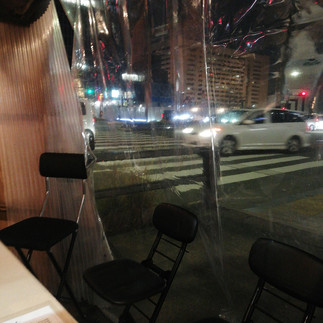Yatai (Food stalls on the streets) Management
- LKP

- Nov 16, 2021
- 2 min read
Q: How should disordered business be coped and managed?
A: Stimulate the civic engagements, transparent repeated dialogues with stakeholders and legislation.
One of Fukuoka City's attractions for visitors is "Yatai," which is a food stall on the streets in the city center, which can be rarely seen in other major cities in Japan. There, you can taste famous Hakata Ramen or other local delicacies in half open-air on the streets. In order to keep this, efforts have been made by the city government and stakeholders.
Yatai (Food stalls on the streets)
Fukuoka City is known for Yatai, food stalls on the streets, seen in other Asian countries such as Korea, Taiwan, and Thailand. Many visitors enjoy eating famous Hakata Ramen, grilled chicken skewers, a Japanese hotpot dish called Oden, and drinking beer or sake there. Or there are some Yatais for casual Italian or French dishes. Initially, it started as a drinking place for Japanese businessmen after work. It is also a place for senior tourists to feel nostalgic about the 1960s and the 70s, for the younger generation and foreigners to experience something new.
Many Yatais were seen in many major cities in Japan after WWII. However, most have disappeared due to strict local policies, rising public awareness of hygiene, and city development such as road expansion and new facility building. And now, in Japan, Yatais can hardly be seen, except in Fukuoka City's central areas. Fukuoka's Yatai has become popular among visitors since the 1990s. At the same time, the issues concerning Yatai also emerged; blocking the pedestrian passage, its unsanitary conditions and excessive pricing among the residents.
The residents in Fukuoka City had mixed feeling toward Yatai’s presence. According to the survey on the public awareness on the presence of Yatai conducted by Fukuoka City Government, the percentage of the people who have been to Yatai was 80.8% in 1996 and dropped to 73.1% in 2014. However, the percentage of people feeling positive about Yatai being unique to Fukuoka up from 47.5% in 1996 to 64.0% in 2014. And in 2011, a local think tank showed data of economic ripple effect of Yatai would be over five billion yen, including the accommodation cost by the travelers and the effect on the local employment. In order to solve the issues, the study sessions were held on Yatai management held by stakeholders, such as the local government, police, and academics. And Fukuoka City became the first city in Japan to have the ordinance on Yatai Management in 2013.
With this ordinance, the Yatai operators can open the designated space and area, fixed time slot. Now, new entrants can submit for the application and take the interview and written exams on the regulations, hospitality towards the visitors, and the measures against infectious diseases. The city government also installed infrastructures such as the water supply and sewage system in the designated areas for Yatai operators.
Even though Fukuoka City's Yatai culture has survived over 70 years, the number of Yatais has been decreasing. There were over 400 Yatais in the 1960s; however, slightly over 100 in 2020. To keep this city's attraction, Yatai should be promoted not only within Japan but also abroad. And it is also important to make Yatai a business that will be successors to follow.
[Case ID: Urban Policy UP-10]





























Comments